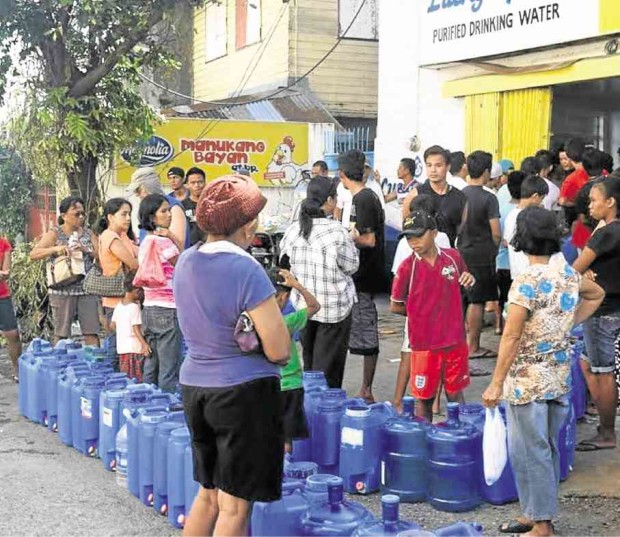Disease stalks survivors as clean water gets scarce

Residents in the Catanduanes capital of Virac queue at a water refilling station after Typhoon “Nina” damaged pipelines and water sources, cutting supply in the town. —FERNAN GIANAN
VIRAC, Catanduanes— Local health officials are worried about a possible increase in diarrhea cases in Catanduanes province after Typhoon “Nina” (international name: Nock-ten) damaged water sources and left thousands of residents in this capital town of Catanduanes province scrambling for potable water.
A 36-year-old man had died at the Immaculate Heart of Mary Hospital on Dec. 28, three days after typhoon Nina battered southern towns of Catanduanes on Christmas Day.
In a report, Dr. Hazel Palmes, provincial health officer, said the victim was diagnosed with acute gastroenteritis with severe dehydration. She said the victim drank water from the Inagasan falls, which is a short walk from his village of Sto. Niño.
The provincial health office said Virac had recorded 215 cases of diarrhea, with three deaths, from Nov. 27 to Dec. 10.
Palmes said officials of Sto. Niño should help remind residents to boil their drinking water to avoid water-borne diseases. The town government, she said, should also start rationing water in the village and nearby communities.
Article continues after this advertisementGov. Joseph Cua earlier asked Health Secretary Paulyn Ubial for immediate assistance in providing potable water to typhoon-hit communities to prevent a diarrhea outbreak.
Article continues after this advertisementHe asked the Department of Health to send a mobile filtration system and a 5,000-liter capacity water tank to address the problem as the province undergoes rehabilitation following the typhoon devastation.
Cua sought the DOH’s help to find financing institutions to support the installation of a P10-million filtration and water treatment facility for Virac Water District’s two sources at Padurog and Sibanhan villages. Another P4 million is needed to upgrade the municipal water systems in Gigmoto and San Andres, he said. —FERNAN GIANAN